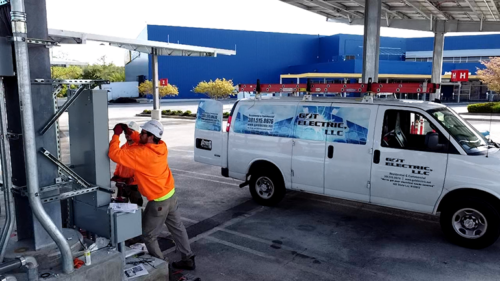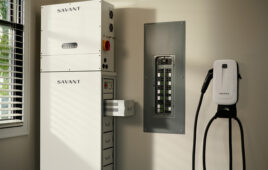 Grant Gotlinger was looking for a change of pace after working for 19 years as an electrician in the Maryland area. When his company was approached to assist with the electrical portion of a solar project being installed on top of a Kohl’s department store, he accepted. That project launched a new beginning for Got Electric in the burgeoning solar industry.
Grant Gotlinger was looking for a change of pace after working for 19 years as an electrician in the Maryland area. When his company was approached to assist with the electrical portion of a solar project being installed on top of a Kohl’s department store, he accepted. That project launched a new beginning for Got Electric in the burgeoning solar industry.
In this episode of the Contractor’s Corner podcast, Gotlinger talks about how the company has grown and expanded service offerings even in the midst of a tumultuous time for the industry and economy in general.
An edited portion of the interview is below, but be sure to listen to the full podcast for more insight on the struggle of retrofitting solar projects and Gotlinger’s hope for more integrated new-build solar projects in the future.
Find the Contractor’s Corner podcast on your favorite podcast app. Thank you to this month’s sponsors, Scanifly and WAGO.
 WAGO pioneers CAGE CLAMP spring pressure connection technology and an extensive range of Interconnect, Interface and Automation solutions for the solar industry.
WAGO pioneers CAGE CLAMP spring pressure connection technology and an extensive range of Interconnect, Interface and Automation solutions for the solar industry.

Scanifly is the only drone-based solar software focused on automating the survey and design stages of your solar project’s life.
SPW: How did you get into solar?
Gotlinger: In 2006, we started Got Electric. Around 2008, the economy started to suffer. A company out of New Jersey called us and asked us if we would like to help them put a solar project on top of a Kohl’s department store in Eldersburg, Maryland.
We ended up getting into solar that way. The [next] project we did was a 280-kW plant for SunEdison back in 2008. And we basically rode the “solar coaster” from there.
Getting into solar when I did, it was perfect timing because I’ve been an electrician since I was 19 years old. When you work in a field for that long, you start to get bored of it. So solar helped with that a little bit and helped us move forward.
How much of your business is solar now?
I would say it’s probably 70% of what we do. We specialize mainly in the C&I space with regard to putting solar on schools, we’re doing quite a few of those in Virginia. And then we’ve migrated into doing some utility-sized projects in Pennsylvania and Maryland.
How do you win a contract to install on a school?
You have to take into a consideration that a lot of these entities have large safety concerns. We are particularly careful when bidding these projects to understand what those requirements are.
At this point, we’ve changed how we go about it. We kind of say, ‘Hey, look, this is how we want to build these projects. We suggest that you listen to us because we have the experience.’ And that way, we added a valued engineering aspect to the bid process.
Getting into this industry is difficult, but the guys that we have are seasoned and experienced, and it takes a lot of understanding of the environment that you’re in to be successful at that.
What has been the most rewarding moment of your career in solar?
We’ve had a lot of firsts in this state where — with the help of EPCs like Standard Solar and, at the time, SolarCity — we’ve built some pretty neat projects. We’ve migrated out of being an electrical contractor only to being an EPC. Opening a second office in Harrisonburg, Virginia, was a big deal for us. We’ve basically doubled in size and we have close to 50 employees right now, so that was a feather in the cap.
We built a 19-MW ground-mount tracker in Pennsylvania that was our biggest project to date. That was a big accomplishment for us, but some of the most difficult projects are typically not those. The difficult ones are typically the smaller ones that are in a facility that has security that is pretty high, where not everybody can get into the site.






Tell Us What You Think!